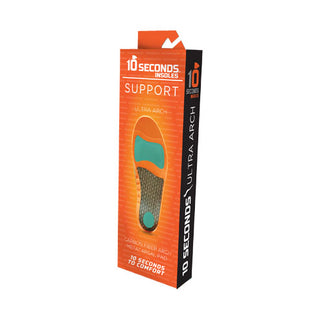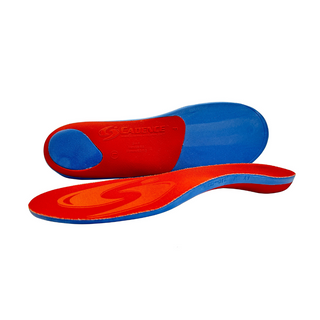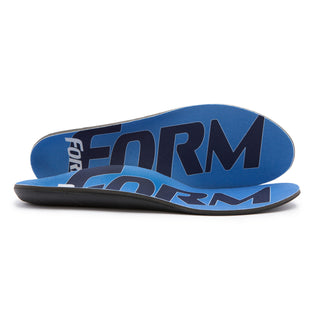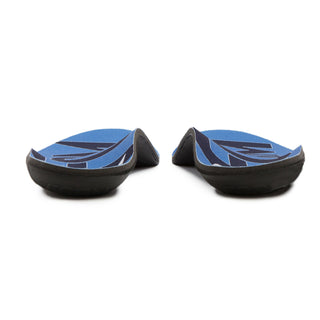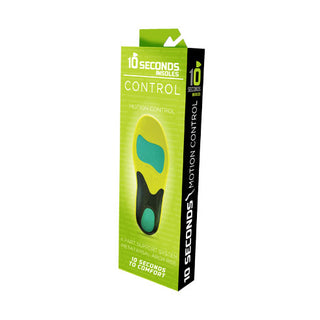Hip Pain: Causes, Symptoms, and Treatment
Recommended for Hip Pain: Causes, Symptoms, and Treatment
View allThe hip truly is a marvel of biomechanical engineering.
The hip is the largest ball and socket joint in the human body, and sustains an enormous amount of wear and tear all our lives while making things like walking, running, skipping, and jumping possible.
The hip joint is lined with cartilage where the femur (thigh bone) meets the socket of the hip bone. This ball and socket joint allows for rotational movement, while cartilage keeps things smooth and fluid. As you age, though, this joint can wear down. Cartilage and tendons are not indestructible, and with time and overuse, they can weaken and lead to a variety of conditions, which can cause hip pain.
In this article, we will examine the common causes of hip pain, treatment options, and whether orthotics or insoles may be able to help provide relief for your hip pain.
What causes hip pain
Hip pain is a broad symptom that can be caused by a variety of conditions, some more serious than others.
- Arthritis: One of the most common causes of hip pain, especially in older adults. Arthritis leads to joint inflammation, which can break down the cartilage in the hip, causing pain and inflammation to gradually get worse.
- Bursitis: Bursae are liquid-filled sacs found in joints, which, along with cartilage, ease the friction when you move. Sometimes the bursa gets inflamed, which can cause pain. This is usually caused by overuse or improper movement.
- Tendinitis: Tendons are the thick bands of elastic tissue that attach bone to muscle. We have tendons all over our bodies that make movement possible. Sometimes tendons can become irritated after repetitive stress and overuse, which can lead to painful inflammation.
- Muscle strain: Muscles connect at the hip to help you get around on your feet, and overuse or improper movement can lead to a strain, which causes pain and inflammation.
- Stress fractures: As you age, bones become weaker. A tumble on the ground may not do much damage to a child, but as the years go on, a fall could result in a fractured hip.
- Leg Length Discrepancy: When one leg is shorter than the other, this can put stress on the hip joint when walking and therefore contribute to hip pain. The larger the difference in length, the greater the chance there is for pain in the hip.
How to Treat Hip Pain
Depending on the underlying cause, there are a few treatment options for hip pain. They are:
- At-home treatment
- Medical treatment
At-Home Treatment for Hip Pain
If your hip pain is caused by a muscle/tendon strain or tendonitis, you can usually treat the pain at home.
Over-the-counter pain medication can help, as will rest and ice. If your hip pain is worsened by repeated standing (or if you have a job that requires standing for long periods of time throughout the day), insoles or orthotics may be helpful in relieving pain by providing extra cushioning and support.
If your pain does not go away with rest and at-home treatment, it’s time to seek help from a medical professional.
Medical Treatment
If your pain is persistent or if you notice swelling, redness, and warmth around the joint, it is time to seek help from a medical professional.
If you experience the following symptoms, it is probably best to go to the doctor:
- Sudden pain in the hip
- A fall/injury triggered the pain
- You are bleeding from the hip
- You heard a popping noise upon injuring your hip
- The pain is intense
- You cannot put any weight on your hip
- You cannot move your leg
These could be signs of a serious injury that cannot be treated at home.
When to seek care
If your pain is persistent, or you notice swelling, redness, and warmth around the joint it is time to seek help from a medical professional.
If you experience the following symptoms, it is probably best to go to the doctor:
- Sudden pain in the hip
- A fall/injury triggered the pain
- You are bleeding from the hip
- You heard a popping noise upon injuring your hip
- The pain is intense
- You cannot put any weight on your hip
- You cannot move your leg
These could be signs of a serious injury that cannot be treated at home.
How is hip pain diagnosed?
When consulting a doctor, there are various questions and tests they will use to diagnose the cause of your hip pain.
They may ask you:
- Whether the pain is worse at one particular time of day
- How your hip pain impacts your ability to walk
- When the symptoms first appear, and if they have changed in any way
- Whether symptoms have worsened over time
There are a variety of tests doctors can perform as well to diagnose the source of your pain, such as:
- X rays
- CT scans
- MRI scans
- Ultrasounds
- Fluid samples
- Range of motion tests
Insoles for hip pain
Orthotics or insoles specifically designed to provide cushioning and support may be worth a try, especially if your pain is mild or caused by a muscular strain.
Insoles can help ease hip pain by providing much-needed support and relief to your shoes. For example:
- Insoles help redistribute pressure across the foot during walking and standing, which can improve overall body alignment from the ground up.
- Shock absorption from insoles reduces the impact forces that travel up through your legs to your hips with each step. This is especially important when walking on hard surfaces or during high-impact activities, as it decreases the stress placed on your hip joints.
- The arch support provided by insoles helps maintain proper foot posture, which in turn supports better knee and hip alignment during weight-bearing activities.
One thing to note: Insoles for hip pain will need to be chosen based on the type of arch that you have.
- Low and flexible arches will usually cause you to overpronate
- High and structured arches will tend to cause you to underpronate.
If you want to see if insoles may alleviate your hip pain, but do not know what to try, we recommend the following, depending on your arch type:
- Cadence Low Arch (low arch)
- 10 Seconds Motion Control (low arch)
- Cadence Original (medium arch)
- Powerstep Pinnacle (medium arch)
- Form Maximum (medium to high arch)
- 10 Seconds Ultra Arch (high arch)


